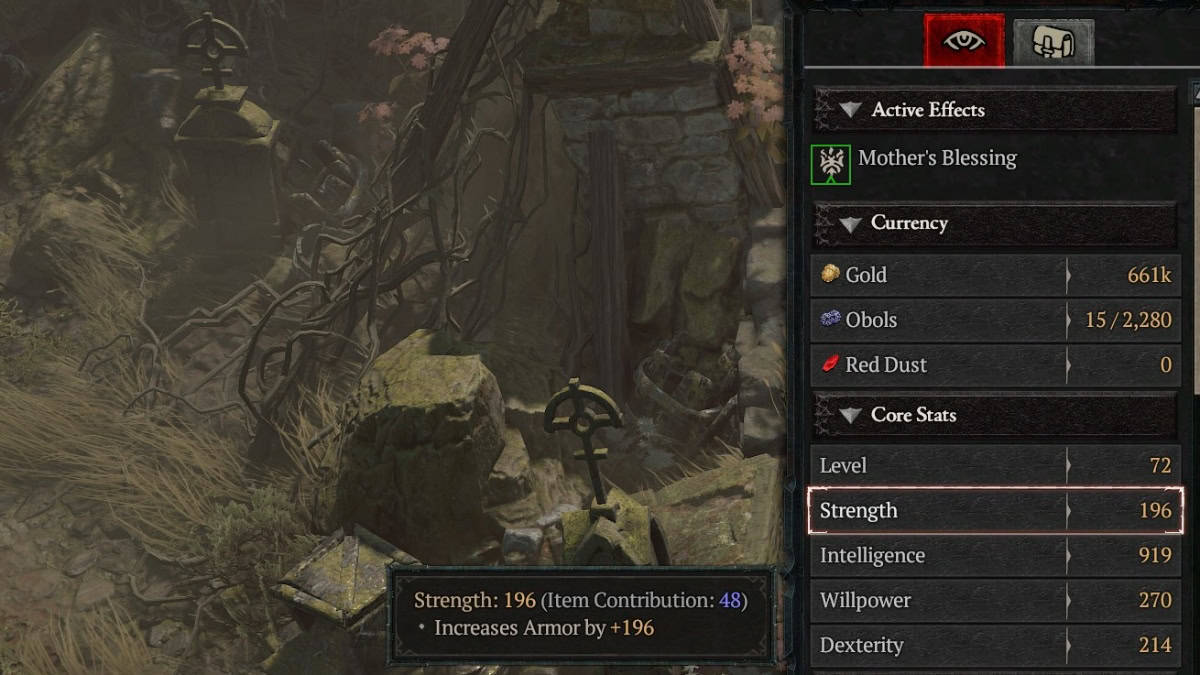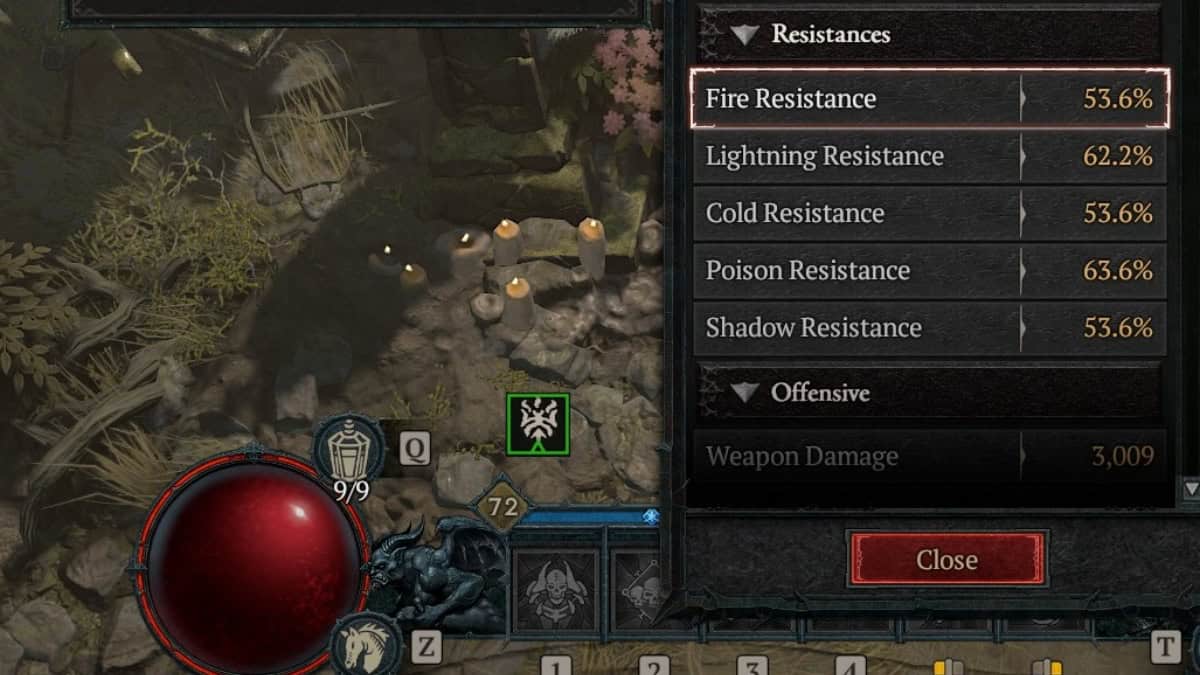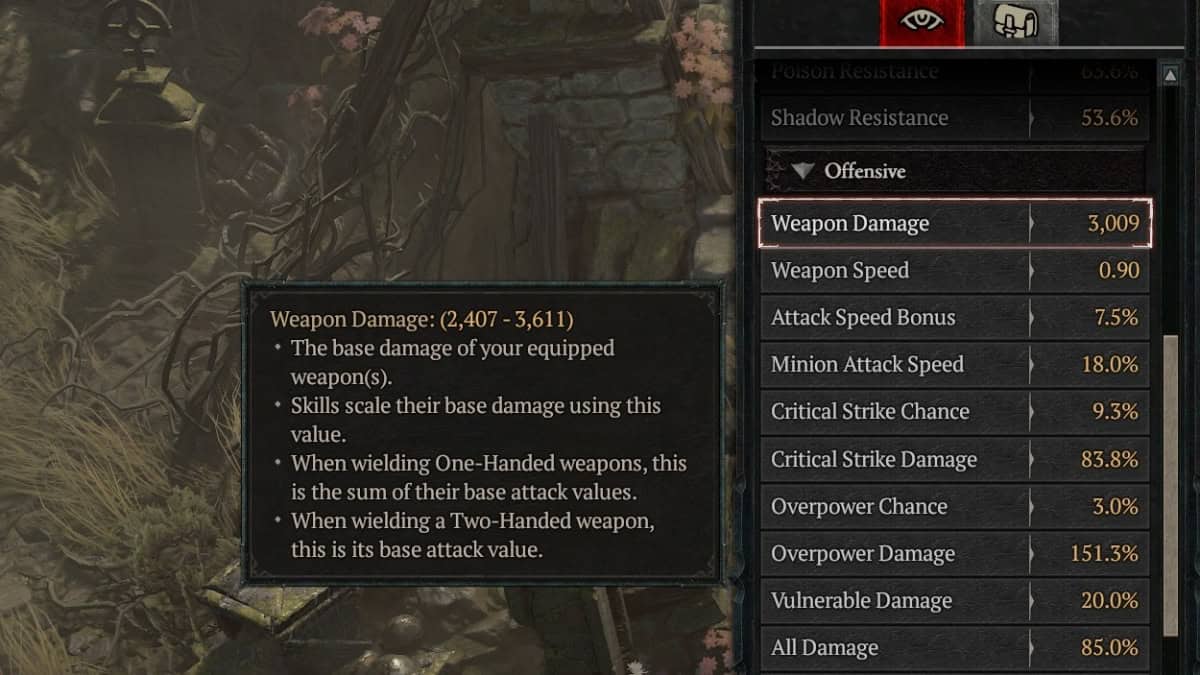Skip To...
You can’t have a Diablo game without stats, and in Diablo 4, stats are your metrics for progression. They’re a gauge for your power and when in doubt, just increase your stats. However, Diablo 4 has streamlined the old stat D&D-esque stat sheet common in its predecessors while also adding in more complex stats. Here’s what all these Diablo 4 stats do and how to utilize this game mechanic to your advantage.
[Updated on August 24, 2024 – Guide revised and added more detailed explanations about the Core Stats and Resistances]
Diablo 4 Core Stats Explained
Like Diablo 2 and Diablo 3, there are four main or primary stats in Diablo 4. The difference is that each of these stats is a main stat for each of the current five classes in Diablo 4. A class’s main stat can determine its damage on top of the stat’s actual effect.
As for each of the stat’s actual effects regardless of class, here they are:
| Stat | Effect | Class (Primary) |
| Strength | +1 to Armor per point | Barbarian (+0.1% Skill Damage per point) |
| Dexterity | +0.025% Dodge Chance per point +0.02% Critical Strike Chance per point (except for Rogues) | Rogue (+0.1% Skill Damage per point) |
| Intelligence | +0.05% to All Resistances per point +0.02% Critical Strike Chance per point (for Rogues) +0.03% Resource Generation per point (for Druids) | Sorcerer / Necromancer (+0.1% Skill Damage per point) |
| Willpower | +0.1% Healing Received per point +0.25% Overpower Damage per point +0.03% Resource Generation per point (except for Druids) | Druid (+0.1% Skill Damage per point) |
Additionally, each class starts with a set number of stats depending on their main stat. Their primary core stat is usually the highest at 10 points. Meanwhile, their secondary core stat is at 8 points.
| Class | Strength | Dexterity | Intelligence | Willpower |
|---|---|---|---|---|
| Barbarian | 10 | 8 | 7 | 7 |
| Druid | 7 | 7 | 8 | 10 |
| Rogue | 7 | 10 | 7 | 8 |
| Sorcerer / Necromancer | 7 | 7 | 10 | 8 |
And from there, each stat gets increased for every level-up, all the way to Level 100. You can also increase these stats by finding the Altars of Lilith all over the map (usually +2 points each).
The items you get are also tailored to your class and they tend to come with a huge bonus to your class’s primary core stat (i.e. Barbarians often get items with +X to Strength). Some items, however, give a +X to All Stats.
Resistances in Diablo 4 are Underrated Survival Metrics
If you find yourself constantly dying fast especially in World Tier 3 or World Tier 4 even if you have maxed out Armor (9,230) or a lot of Life (15,000+), the usual culprit would be the Resistances you have.
Upon release, Resistances didn’t work as intended, but the developers have since fixed them and they are now something you should never ignore. There are five Resistances in Diablo 4:
| Fire Resistance |
| Lightning Resistance |
| Cold Resistance |
| Poison Resistance |
| Shadow Resistance |
You can probably guess which attack they shield you from– pretty self-explanatory stuff. Any damage that isn’t Fire, Lightning, Cold, Poison, or Shadow is usually Physical or raw and will typically go through your Armor instead of Resistance. The same applies to the enemies you’re fighting.
Regardless of the content you’re fighting, you will want each and every one of these Resistances to be at their cap of 70% because each point close to 70 is incrementally better. At World Tier 4, note that you will get a Resistance penalty of -50% for all of them. That’s why you need a lot of Resistance on your gear.
Certain interactions or skills might let you increase your Resistances past 70 but they will never exceed 85%, as per the game’s hard rule. Thankfully, it’s manageable enough to achieve capped Resistances using jewelry, armor, and gems.
Offensive, Defensive, and Utility Stats
Apart from the Core Stats and the Resistances, each class, character, or build can also have several smaller stats that come from their Skill Tree, Paragon Board, gear, or Aspects. These are categorized into Offensive, Defensive, and Utility stats.
There are a lot of them and not all will be suitable for your character. Some will be class-specific while others– despite being universal, might not be suitable for a particular class or build (such as Damage Over Time or Overpower). Still, some have more important uses than others. I’ll mention some of the more universal ones for just about most builds.
Important Offensive Stats
| Weapon Damage |
| Attack Speed |
| Critical Strike Chance |
| Critical Strike Damage |
| Vulnerable Damage |
| All Damage |
| Damage vs Crowd Controlled |
Important Defensive Stats
| Maximum Life |
| Potion Capacity |
| Armor |
| Dodge Chance |
Important Utility Stats
| Maximum Resource |
| Resource Cost Reduction |
| Movement Speed |
| Cooldown Reduction |
| Lucky Hit Chance Bonus |
| Experience Bonus |
Of course, there are more depending on your build, and you will have to do your due diligence in determining the strengths and weaknesses of a build so you can focus on these smaller stats. But generally, you can’t go wrong with the choices above for a majority of the builds and classes in Diablo 4.










